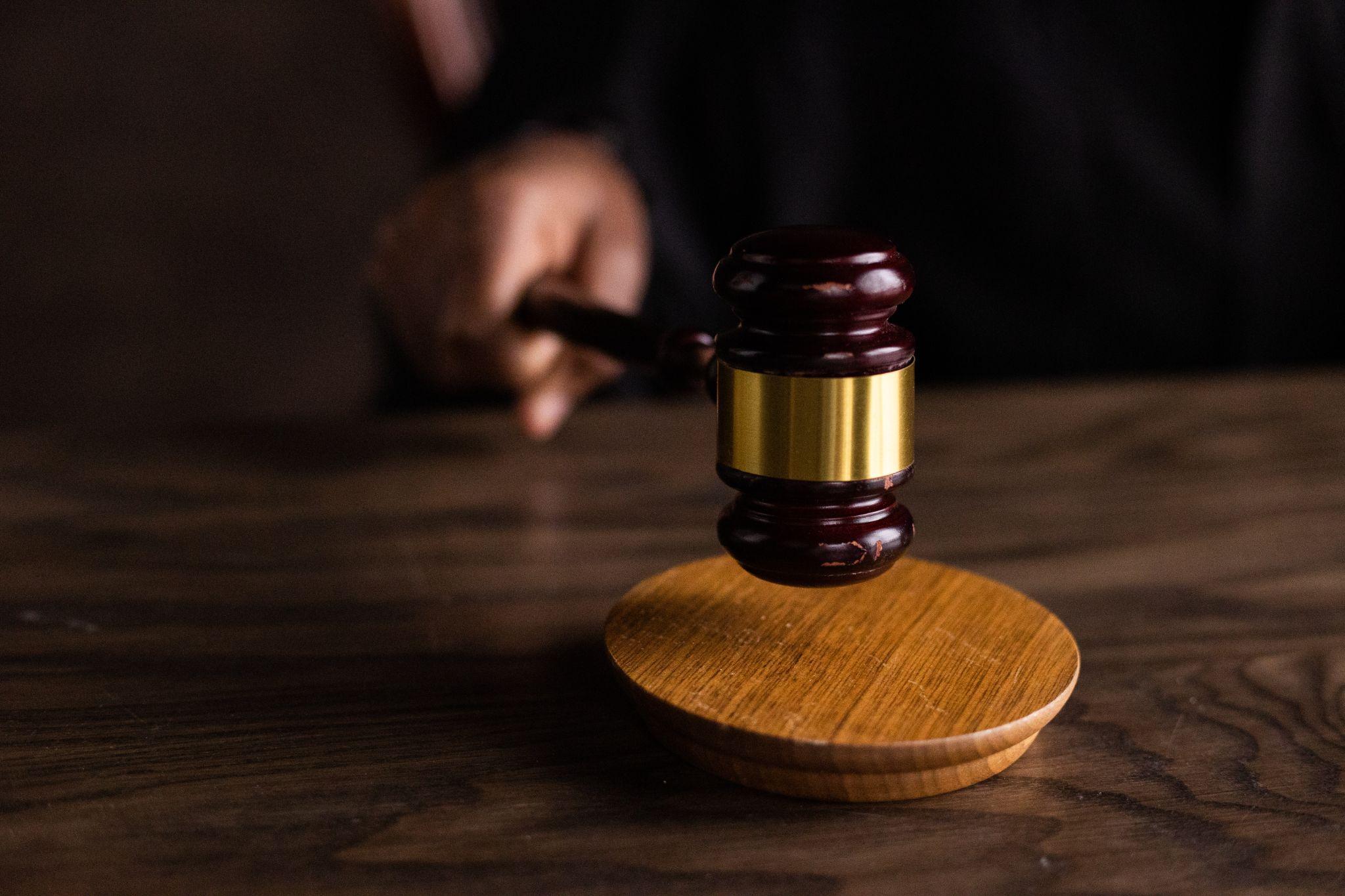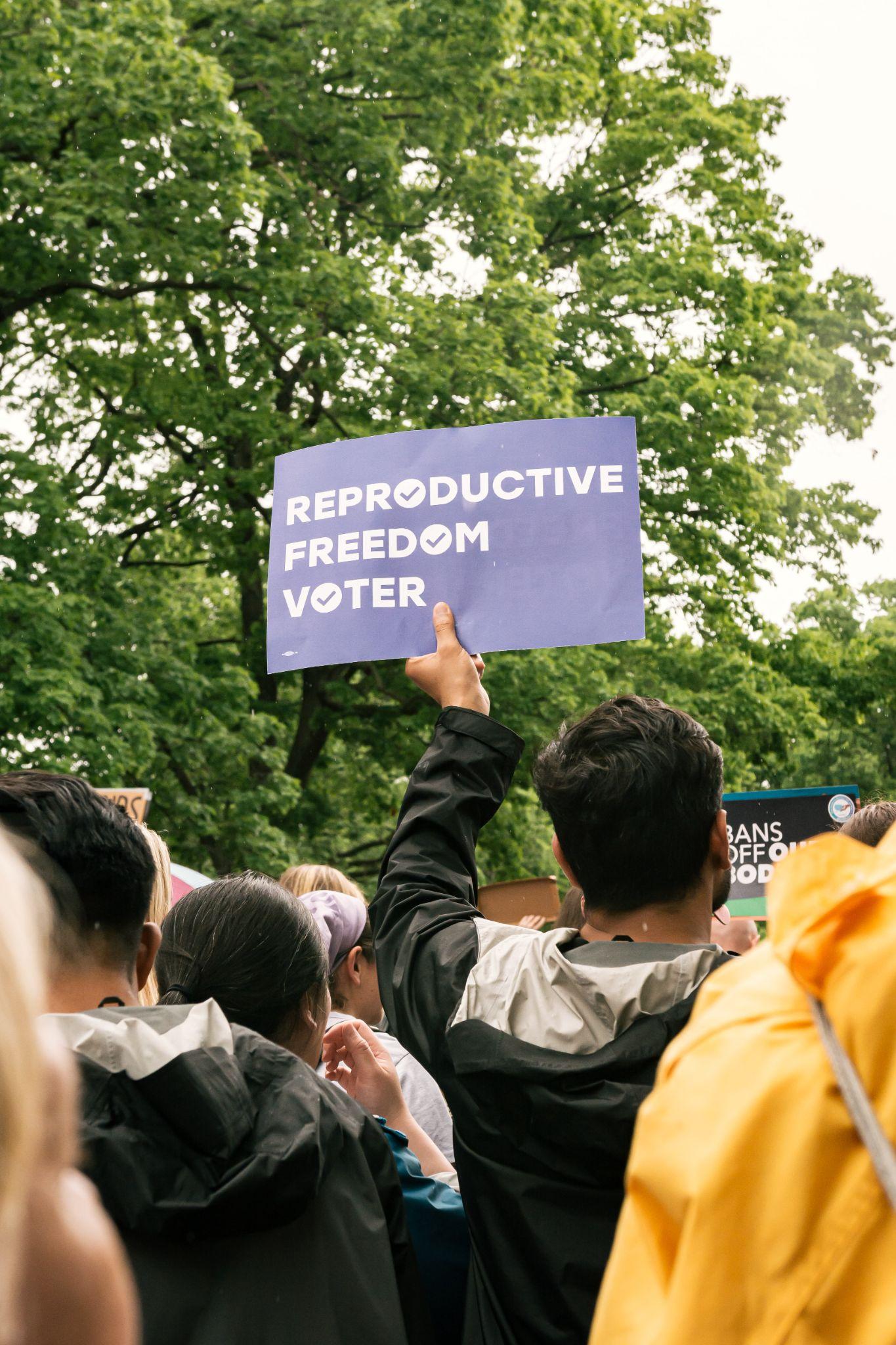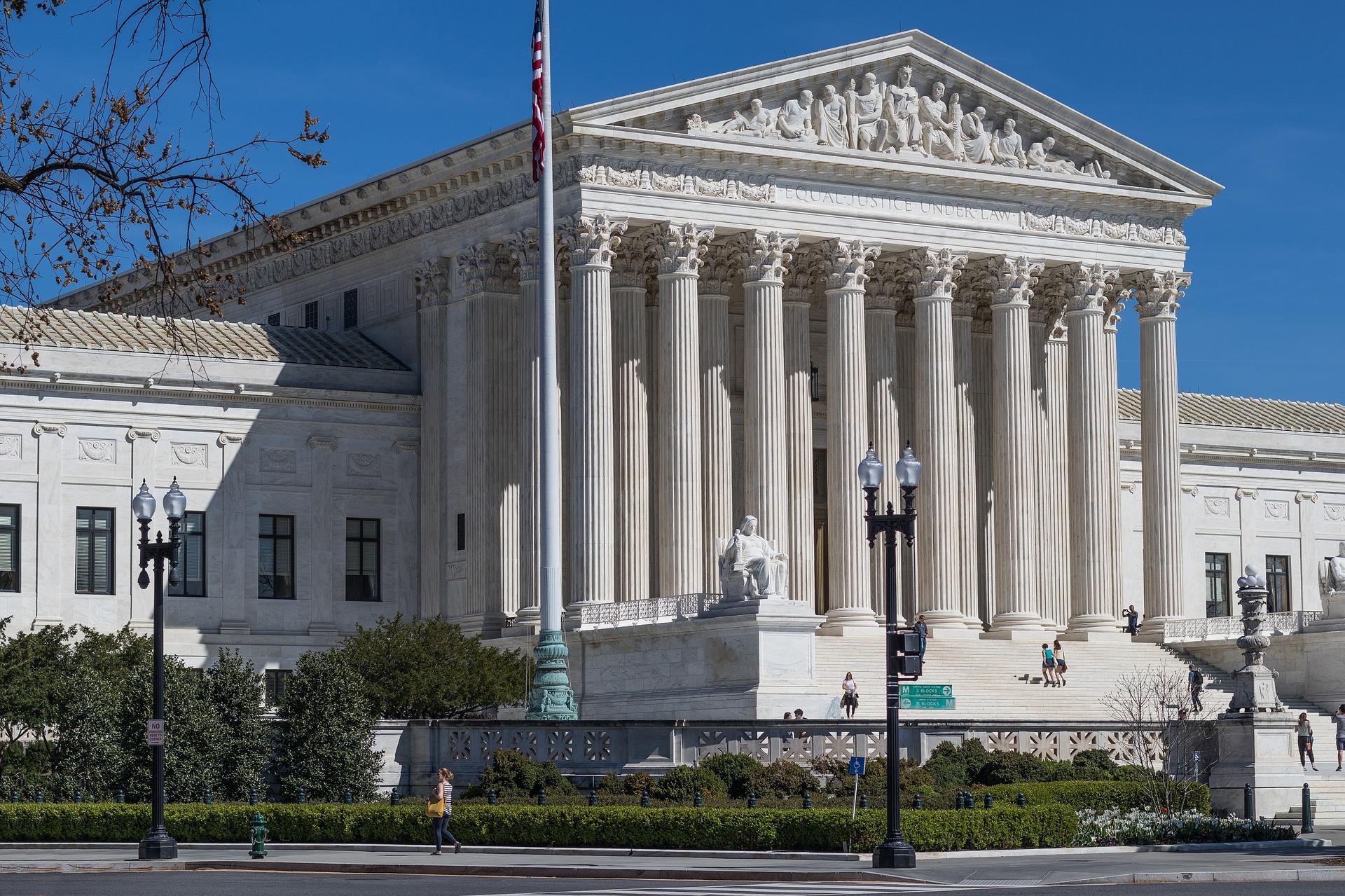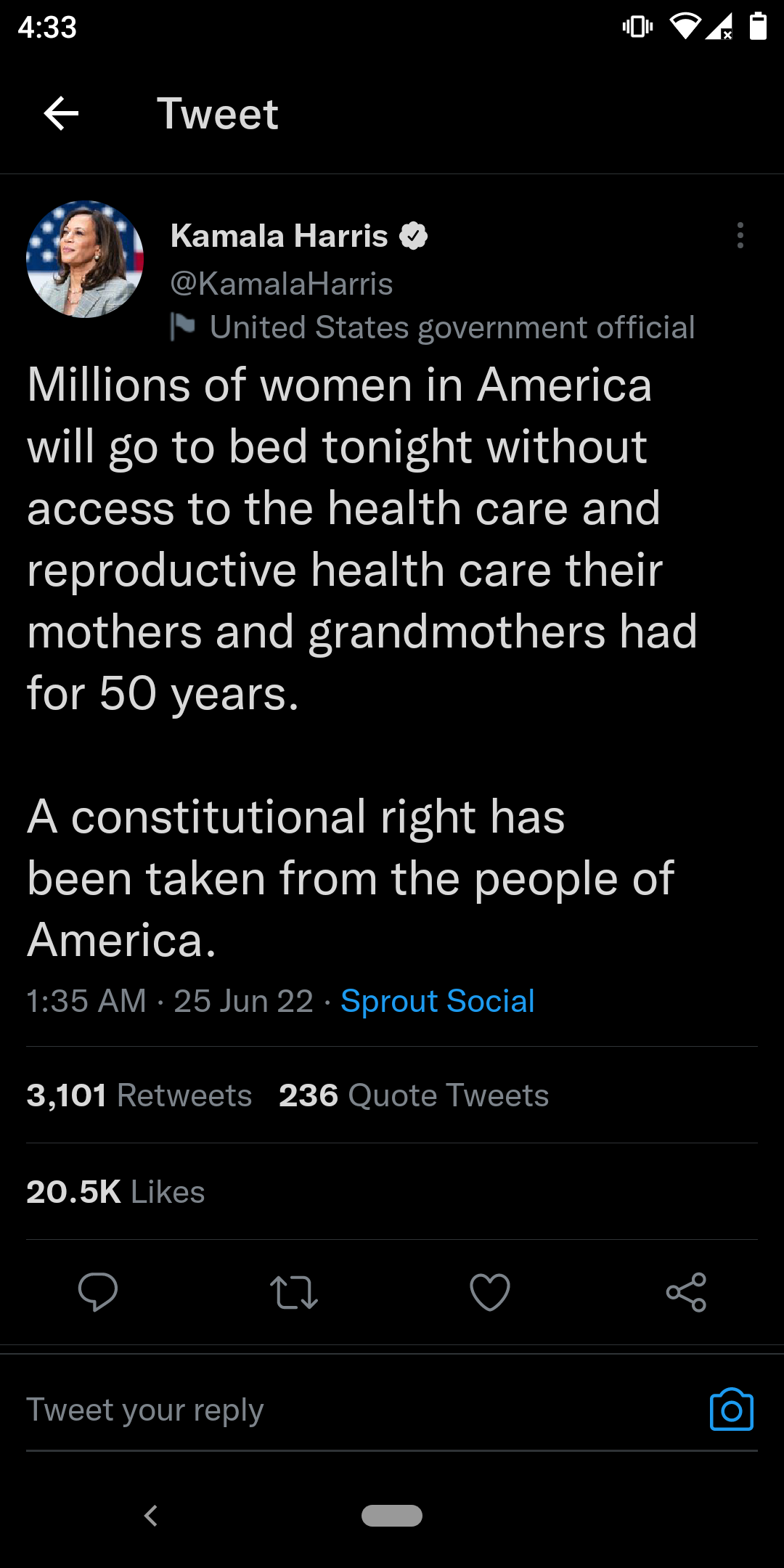Roe V. Wade: A New Chapter?

The past few months have been quite eventful. The decision of the Supreme Court of the United States of America sent shock waves down the spines of many women. In a unanimous verdict, the SCOTUS overturned its previous decision in the Roe v. Wade case regarding abortion rights.
Roe v. Wade was a locus classicus case that laid the foundation for reproductive rights. Because of this case, many women could seek safe abortions in hospitals across the country. The court reaffirmed its decision in the case of Planned Parenthood v. Casey.
While abortion rights have been a controversial topic across the globe, the decision seemed settled in the USA, or so we thought. Though the age-long debate between pro-life and pro-choice supporters remained, at least safe abortions were an option.
Based on recent events, it appears women may have to say goodbye to this option. As we analyze this case and the possible effects of the decision, we will also consider what abortion rights exist in other parts of the world and what we think is the way forward.
What Happened In Roe V. Wade?

Image Source: Pexels
Decided in 1973, Norma McCorvey alias Jane Roe filed an action against the state of Texas to challenge the existing legal provisions on abortion. She argued that these laws constituted an invasion of her right to privacy, guaranteed under the Bill of Rights.
It also infringed on her right to liberty under the Fourteenth Amendment, which provides:
No state shall deprive any person of life, liberty, or property without due process of law.
Under the Texas abortion law, a woman could only have an abortion when the pregnancy was medically unsafe for the mother. Jane Roe argued that a woman should be able to abort her unborn child for any reason, without any explanation.
The counsel for Texas argued that it must protect the lives of both the mother and unborn child and preserve medical standards. It also claimed that the unborn child qualifies as a person under the constitution. Therefore, it has a right to life.
In its verdict, the Supreme Court decided that abortion rights fall within the right to personal liberty. It also stated that the US constitution did not cover prenatal life since it defines a citizen as someone born or naturalized in the USA.
The supreme court decided that compelling a woman to carry a pregnancy to full term may jeopardize her physical and mental health. It may also impose undue financial burdens and social stigmas on her.
However, the court acknowledged the state’s duty to protect the mother and preserve medical standards. Therefore, it sought to strike a balance between the individual right to personal liberty and the state’s duty of care.
It divided pregnancy rights into three categories.
- During the first three months, a woman can seek to abort her pregnancy without any reason or explanation. However, it must be by a qualified medical practitioner.
- The state may impose abortion regulations within the second trimester if they relate reasonably to the woman’s health.
- Any abortion in the third trimester compromises the duty to protect the individual. Therefore, the state may impose strict regulations restricting abortions under this category.
Significance of Roe V. Wade

Image Source: Unsplash
While many believed this decision increased the number of abortions carried out in the USA, this was not the case. Detailed studies indicate that before the supreme court verdict, illegal abortions in America were over 800,000. Unfortunately, about 18% of these abortions resulted in death.
After the verdict in Roe, the numbers were pretty much the same. But this time, the death toll reduced significantly. Women now had access to safe abortions and could come forward legally without fear or judgment.
Over the years, different attempts at higher restrictions on abortion have been made, especially during the third trimester. For instance, at least 17 states have made pre-abortion counseling compulsory, while others require a short wait period after counseling to have the procedure.
Why was Roe v Wade Overturned?

Image Source: Pixabay
On June 24, 2022, in the case of Dobbs v. Jackson Women’s Health Organization, the Supreme Court overturned its verdict in Roe. In his ruling, Justice Samuel Alito stated that the verdict in Roe was egregiously wrong and upheld a Mississippi law that bans abortions after 15 weeks.
According to Justice Alito, the court invented a right that did not exist under the constitution. The belief that the right to personal liberty under the fourteenth amendment covers abortion rights is flawed. Abortion rights should be determined by the people’s elected representatives, not by the court.
Although opinion polls suggest that many Americans support upholding the verdict, republican justices who dominate the supreme court have overturned the landmark decision.
Overruling the previous verdict gave rise to an uproar, especially on social media. Many celebrities and political figures, including President Joe Biden and vice president Kamala Harris had negative reactions.

Image Source: Twitter
While some Americans consider this a victory, others think it a setback. The decision implies that each state can decide whether or not to ban abortion since the court held that the constitution has no say on the matter.
To correct this implication, Vice President Kamala Harris has called for the decision in Roe v Wade to be codified. On his part, President Joe Biden signed an executive order to prevent the full impact of the verdict and to protect women’s reproductive rights.
Judicial thought processes went into that verdict with precise reasons for the judgment. The court considered the interests of all parties and found a balance between the individual right to privacy and personal liberty, and the state’s interest to protect mother and child as well as maintain the best medical practices.
As the supreme court judges overturned the former decision, one would expect to see a thorough legal analysis of the previous verdict in the new ruling and the reasons for overturning it. Unfortunately, this shows that the judges do not consider the constitutional right to liberty as a right that covers abortion.
This decision is indeed a surprise to many, as the essence of liberty is to protect the freedom of citizens, as long as they do not break any law while exercising their right to freedom. So how can aborting an unwanted pregnancy not fall under the right to liberty?
Abortion Rights In Other Countries
-
Nigeria
As the most populous black nation in the world, you would think Nigeria would take its population control seriously. But the reverse has been the case. Nigeria has a population of over 200 million people and counting, with little effort to control its population.
In addition to overpopulation, illiteracy, poverty, corruption, criminality, and terrorism continue to plague the country. The last population census in Nigeria was in 2006, about 16 years ago. And the youths constitute over 60 million people.
These are the years when most people are sexually active, so reproduction among this demographic is higher. It does not mean such young people are mentally prepared to be parents. Unfortunately, not many people have received sex education, despite the attempts of both the government and private health organizations to achieve this.
Other factors like religion and culture also frustrate the efforts toward sex education. While religion emphasizes abstinence outside marriage, it can have the adverse effect of making people feel ashamed to admit any sexual activity due to fear of judgment. It also means people would be scared to come forward and seek help regarding their sexual or reproductive health.
Sections 228, 229, and 230 of the Nigerian Criminal Code provide that abortion in Nigeria is illegal unless to save the mother. The punishment for anyone guilty, especially medical practitioners, is 14 years.
Millions of Nigerians live below 1 dollar per day, so it is an economic catastrophe to force people to continue to give birth under these circumstances, especially since many of them are not aware of various methods of contraception besides condoms.
Rape incidents are also prevalent in Nigeria, with many unreported cases. There has also been a recent increase in cases of child defilement. The law makes no exception for victims of rape either, so in addition to suffering from one of the most heinous crimes, a woman may be forced to have an unwanted child.
Ironically, Nigeria has one of the highest online searches for abortion drugs. Many women simply opt for the DIY option. Some young ladies use local herbs rumored to induce abortions, like strong alcoholic drinks, or insert metal cloth hangers to kill the fetus.
Others seek the services of quack doctors who perform the operations on a low key. The risks that come with these options are grave. Many young women never make it off the operation table, and for those who do, they run the risk of severely damaged wombs.
Worse still, some women give birth to children and sell them off to human traffickers or abandon them by the roadside. You would agree that a child should be unborn than be delivered to human traffickers or suffer any worse fate.
In essence, the abortion law in Nigeria stifles the voices of young women who for whatever reason find themselves with unwanted pregnancies. It does not even give married women and their spouses the option of safe abortions either.
There have been cases when married women used contraceptives but ended up pregnant anyway. Even though the couple may be financially constrained, these laws compel them to have additional children when the contraceptive methods fail. Yet the government does little to ease the couple’s burden of raising these children.
With the high number of out-of-school children begging on the streets, hawking wares for their parents, or serving as easy recruits for terrorist groups, is it not time for Nigeria to revisit her population control measures?
Religious organizations in Nigeria continue to oppose any attempt to legalize abortion. The belief that abortion is murder and that making it legal encourages promiscuity among young people is prevalent. But these religious beliefs should not limit women’s rights to reproductive health care.
A woman should be able to make her choice and live with it, as long as she is fully informed about all that abortion entails. We must respect body autonomy, the right to privacy, and the right to personal liberty.
2. South Africa
In 1996, South Africa passed the Choice in Termination of Pregnancy Act. This Act made abortion legal and gave women access to safe abortion and reproductive health clinics across the country. After this Act, abortion-related deaths in South Africa dropped by 90%.
While the number of legal abortions increased from 1994 to 2001, it showed women repeatedly fall pregnant, whether or not they applied preventive measures. Most important is for these women to be prepared to shoulder the responsibility of parenthood.
As the majority of these abortions occur among teenagers, cases of teenage girls becoming mothers have reduced drastically. Abortion in South Africa is free in government hospitals and is accessible within the first 12 weeks of pregnancy. After this, access to abortion depends on the circumstances of the pregnancy.
3. China
China’s abortion history is quite controversial. While other countries prevent women from committing abortions, China restricted families to having only one child for over four decades.
The scarce resources and dwindling economy meant that China was reproducing at a rate it could not handle.
Unfortunately, the one-child policy created other problems. Many families preferred to have male children, as boys can carry on the family name compared to girls who would eventually get married. Most couples decided to abort their unborn girls and only deliver male babies.
The result of this was that there were more men with fewer women to marry. Some girls were also unrecorded and abandoned in orphanage homes because couples hoped for a son. And some children grew up with very little education because they were unrecorded and could not access such facilities.
The one-child policy ended in 2015, but its effects still linger. Many families now prefer to have only one child because of the economic benefits. Although the new policy allows people to have up to three children, it may take some time for normalcy to return.
China has a population of about 1.4 billion people. It is the most populated country in the world and is a case study for the dangers of overpopulation. Rather than ignore the growing numbers of citizens, it is wise to take proactive measures to curb their population. This includes making abortion legal and granting women access to safe health care centers.
Other Countries Where Abortion Is Illegal
Many countries have made abortion legal, and some even provide free clinics to ensure women have access to safe abortions. However, most of these countries have a gestational limit on legal abortions. Some limit it between 12 to 25 weeks, while a few others go as far as 21 to 24 weeks.
In countries where abortion is illegal, there may be one or two exceptions. The most common exception is if the abortion is to save the mother. A few other countries allow exceptions for pregnancies of rape or incest.
Abortion is prohibited in about 24 countries. This means there is no exception even to save the woman’s life. Not only are women forced to deliver pregnancies regardless of the circumstances surrounding them, but these countries also do not prioritize women’s health.
Conclusion
While many pro-life activists support the verdict of the supreme court, it is clear that the vast majority of Americans do not. Roe v. Wade was a foundation for recognizing the constitutional protection of women’s reproductive rights.
No nation can truly make progress until it makes women’s rights a priority. It is unfair for other people to prevent women from having autonomy over their own lives and bodies.
The decision to reproduce is a major decision for every woman. Women deserve to be allowed to make that choice for themselves.
Every issue has a legal side to it, whether we realize it or not. My goal is to educate my audience about these legal issues that arise in our societies, especially as a black woman. My Legal articles bring a refreshing, fun, and objective view to trending topics across the globe. In the end, I hope you can learn or unlearn a thing or two wherever the need arises.

